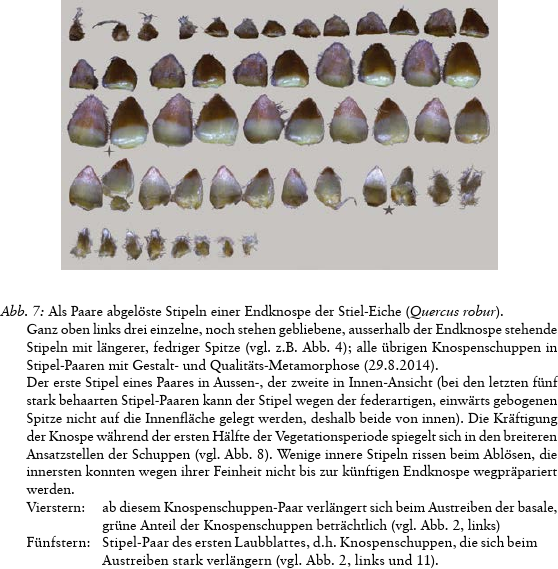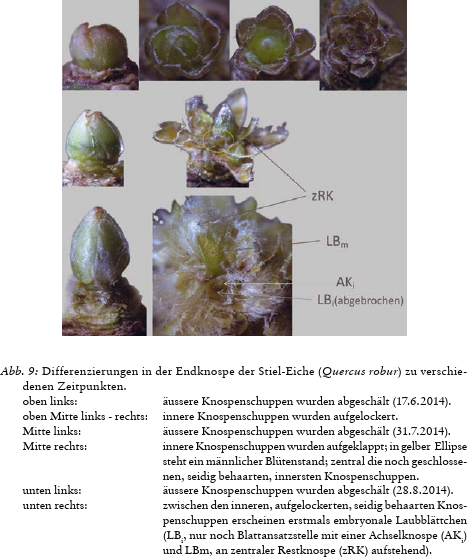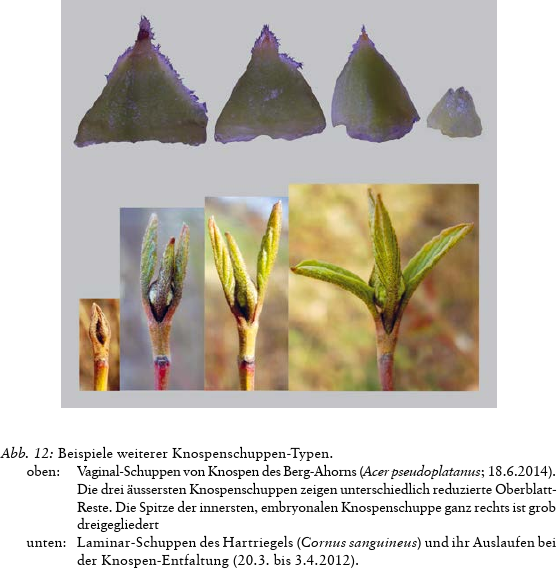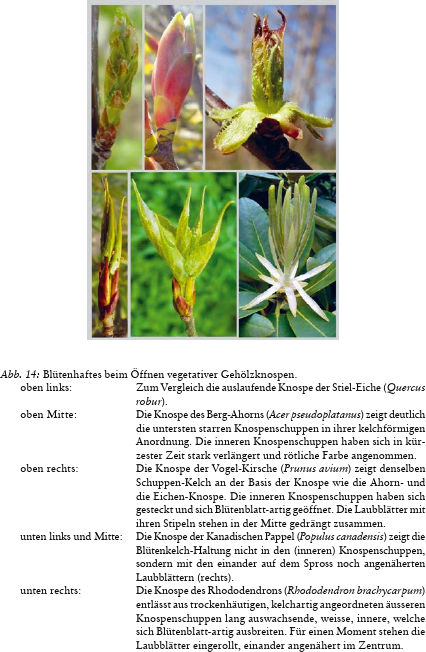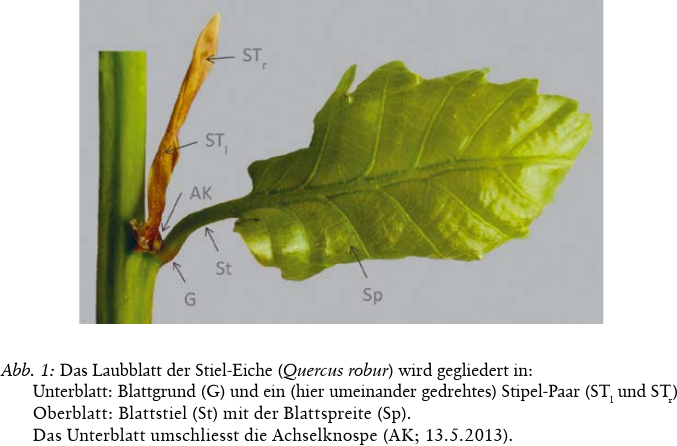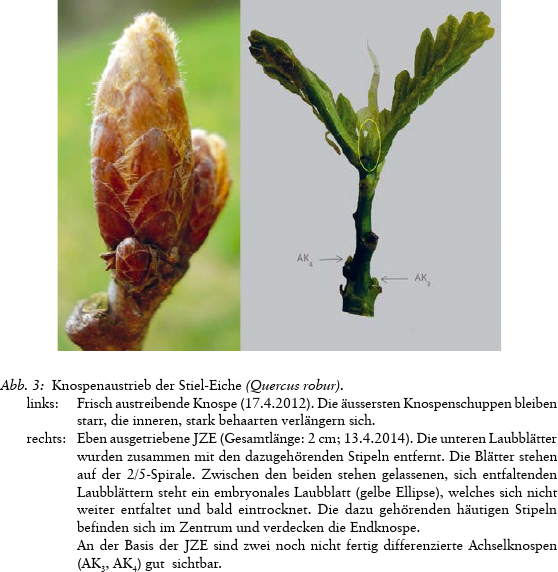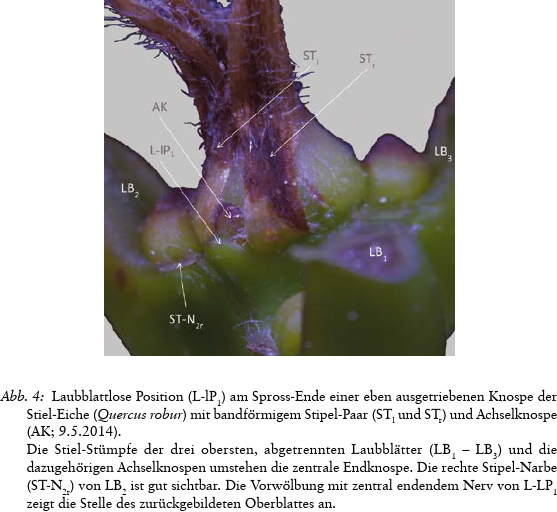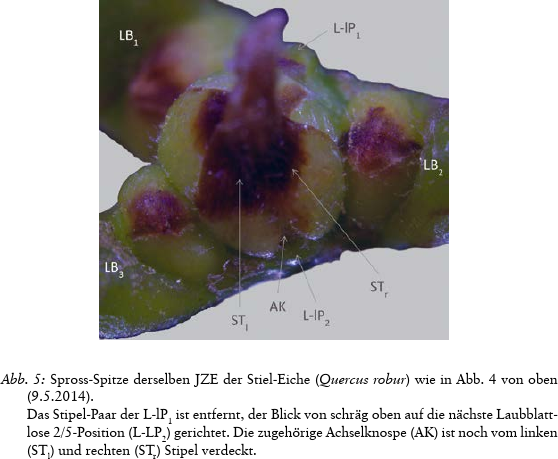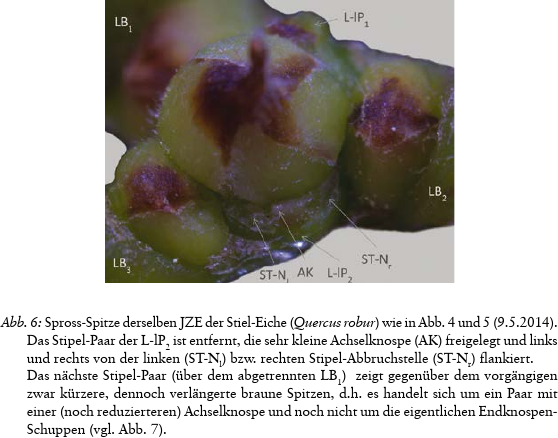Blütenhaftes in der Metamorphose der vegetativen Jahreszuwachseinheit der Stiel-Eiche (Quercus robur L.)
Export Article Citation as
- Plain text
- BibTeX
- RIS format
- Download price : € 6.00
Abstract:
In the work presented here we describe the bud forming process of pedunculate oak (Quercus robur L.). In spring it takes some few weeks before a young shoot has completely opened out. The bud from which it comes has taken one and a half a year to develop to that stage. At that point in time, the terminal bud of the young branch is formed from the outer bud scales. From May to July, inside it develops the primordium for the branch in the following year, as well as the initial stages of the terminal bud that belongs to it.
The series of shapes of the organs in the transition from A) the true leaves of the terminal bud (the metamorphosis into the bud) and B) the terminal bud into the true leaves (the metamorphosis out of the bud) are described in detail. Shape series ‘A’ shows broad similarities to leaf series up to the flower of herbaceous plants. In both cases the upper leaf is reduced, firstly the petiole and then the leaf blade, and the leaf base remains as the outermost scales of the winter buds of the pedunculate oak, or as the sepals of the flower.
At bud opening in spring (shape series B) or with the blooming of the angiosperm flower, a ‘chalice’ opens. With the pedunculate oak, the outer winter bud scales form this ‘chalice’; with the flower the sepals form it. Inside the outer bud scales appear inner, transitory scales that on many bosks are coloured. In the flower, the petals and stamens are located inside the sepals. In the vegetative buds of woody plants the true leaves are arranged centrally, tightly packed, the internodes not yet having expanded. This gesture, typical of the flower, is quickly lost during the growth of the young branch, whereas with the flower it remains during the entire flowering period. The comparison of the true leaves situated in the centre of the vegetative bud with the carpels that are likewise situated in the centre of the flower readily comes to mind.
In metamorphosis theory, the annual plant serves as a model with whose help the metamorphosis of the shoot to the carpel can be visualised. But the metamorphosis to the flower can be understood more readily if we take the perennial, especially the woody plant, as the model. In studying the bud forming process of the perennial we can see a close relationship between the vegetative bud and that of the flower. In the flower, spore formation is added as a specific formative principle.
